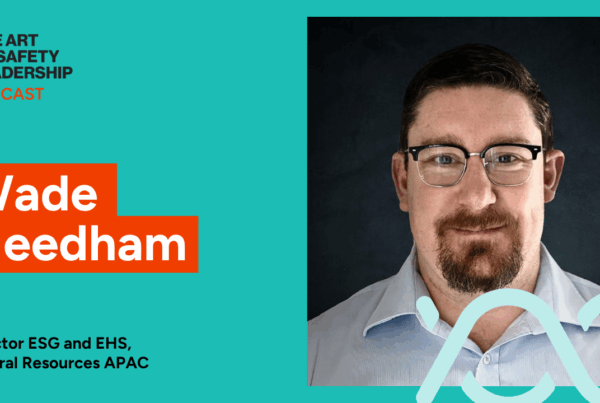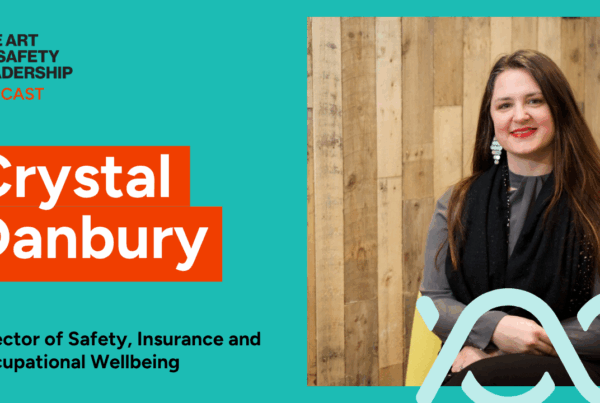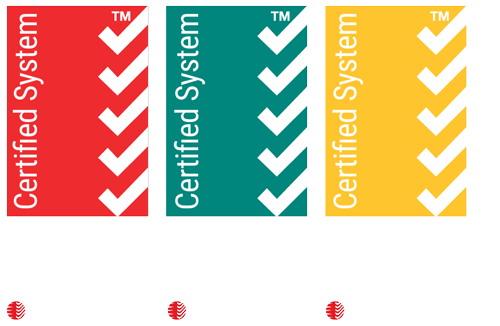There’s a persistent myth in safety leadership that technical competence automatically translates to leadership effectiveness. Yet across industries, we see talented safety professionals struggle when they step into leadership roles, not because they lack expertise, but because they haven’t done the inner work required to lead others.
In our latest episode of “The Art of Safety Leadership,” we spoke with two guests who understand this challenge intimately: Anna Keen, a development partner and leadership coach with 20 years of experience developing safety professionals, and Liam Simpson, Head of Health, Safety & Wellbeing at Wilson James, a 5,000-person organization providing security, construction, logistics, and aviation services.
Their conversation revealed why self-awareness isn’t just a “nice to have” in safety leadership—it’s the foundation upon which all other leadership capabilities are built.
The Sticky Middle Problem
Anna identifies a critical gap in how organizations develop safety leaders: “We train people when they join organizations and when they get to the dizzy heights of leadership, we’ll invest in them. But in the middle, that kind of sticky middle, it’s like Darwin—survival of the fittest. Good luck with that.”
This “sticky middle” is where technical experts transition to leadership roles without the development support they need. The result? Organisations load more responsibility onto capable people until they break, often losing valuable talent in the process.
Liam experienced this transition firsthand. His reflection captures the challenge: “I think stepping into or seeing a leadership role as a potential in the future you have to look ahead… you’ve got that technical expertise and that credibility. But one of the things I’ve learned over the last 10 to 12 years is that all that means nothing. You’ve got to continue to evolve and build wider skills.”
From Doing to Being
The fundamental shift required in leadership is moving from being valued for what you do to being effective through who you are. Anna uses the analogy of an orchestra:
“We start off playing an instrument and then we run a section and then we sit in that kind of conductor role… You can’t just nip in and start playing the violin because the trumpet’s not great today.”
This shift requires a different kind of competence—one that’s less about technical knowledge and more about understanding yourself and others. As Anna notes: “Our ability to recognise that we see the world in a way, and it’s based on everything that’s got us to where we are today. But our team have difference experiences, different lense and we have the ability to start shaping and playing with our own lens.”
The Vulnerability Paradox
For many safety professionals, especially those with military or traditional industrial backgrounds, vulnerability can feel like weakness. Liam admits this was initially challenging: “Coming from the military, status, alpha male, moving into that leadership role, trying to accept that there’s vulnerability in there… you need to be open to that.”
However, his coaching journey with Anna revealed a crucial insight: “I now look at vulnerability as a strength rather than a weakness. In a leadership role, it’s not all about having the answers… it’s bringing everybody on that journey with you.”
This vulnerability isn’t about oversharing or appearing weak—it’s about showing up authentically and creating space for others to do the same.
The Trust Equation
One of the most practical tools Anna shares is the trust equation:
credibility + reliability + intimacy ÷ self-orientation.
This formula breaks down the subjective feeling of trust into measurable components:
- Credibility: Do you know what you’re talking about?
- Reliability: Do you do what you say you’ll do?
- Intimacy: Do you have that human-to-human connection?
- Self-orientation: Are you in it for yourself or for the collective?
Anna explains how this applies to safety leadership: “When we go into work in safety, we often go in on our agenda… Instantly, the self-orientation is ‘I’ rather than ‘we.’ It erodes rather than builds trust.”
The equation also reveals why technical competence alone isn’t enough. Safety professionals often excel at credibility but may struggle with the intimacy component—taking time to genuinely connect with the people they’re trying to influence.
Showing Up vs. Turning Up
Liam shares a powerful distinction he learned from his father: the difference between “turning up” and “showing up.” While turning up is about physical presence, showing up is about bringing your full energy and attention to the moment.
“I think it’s recognising where you’re at and what energy you’ve got to give something and sitting in conscious choice, not reaction,” Anna explains. “Can I show up? And if you can’t, being honest with yourself and others around you.”
This self-awareness prevents the common trap of saying yes to everything and ending up overwhelmed and ineffective.
The Hot-to-Cold Relationship Scale
Anna introduces another practical tool: viewing professional relationships on a scale from cold (they don’t know you exist) to hot (they trust you completely).
“Every time you interact with someone, you have an opportunity to be one degree warmer with every interaction. But when you stop spending time with people, they get colder.”
This visual framework helps leaders be more intentional about relationship building—essential for safety leaders who need to influence change across organizations.
Practical Steps to Self-Awareness
For safety professionals ready to begin this inner work, Anna suggests several practical starting points:
- Build a practice of reflection: “What’s going well, what’s not going well, what are you going to do differently?”
- Get curious about your motivations: “Why do you want to be in these roles? Is it societal pressure? Is it that you want to make more impact? Is it income, ego?”
- Seek feedback actively: “Go and ask the people… tell me what I’m great at and tell me what would be even better.”
- Use assessment tools: “Go and profile the hell out of yourself, but don’t use it as ‘this is who I am and who I ever will be.'”
- Practice the fact vs. story distinction: “Fact is something a video camera can record; story is everything we tell ourselves.”
Measuring Progress
One of the challenges in leadership development is knowing whether you’re making progress. Anna offers this insight: “If I think about my own developmental journey, it’s when something happens… my bounce back is shorter. I’ve got mechanisms now that I can work through. It doesn’t mean I don’t feel all the things that I used to, but it’s my ability to come back to it.”
Liam adds his own metric: “At the end of the day, have I had positive impact today? At the end of the week, how productive have I been?”
The Ongoing Journey
Perhaps most importantly, both guests emphasise that this isn’t a destination but a practice. Anna notes: “I do this for a living. And the amount of times that I sit there and I might’ve had a really difficult day, difficult week, difficult month… it’s recognising that with any kind of growth, any kind of change, it’s a practice, it’s an experiment, it’s an evolution.”
This perspective removes the pressure to be perfect and instead embraces the ongoing nature of leadership development.
The Path Forward
For safety leaders ready to do this inner work, the message is clear: start now, start small, but start. As Anna concludes: “Go and get the feedback. Go and ask. And then get really curious about what is the fact, what are the stories? Because in those stories, you’ll learn a whole load about what’s important to you and how you see the world.”
The technical competence that brought you to leadership is just the entry ticket. The real work—the inner work of understanding yourself, building trust, and showing up authentically—that’s what transforms good safety managers into great safety leaders.
To hear the complete conversation with Anna Keen and Liam Simpson, including more detailed practical exercises and personal stories about their leadership journeys, listen to the full episode below.
Whether you’re stepping into your first leadership role or looking to deepen your existing leadership practice, this conversation offers both the framework and the inspiration to begin the essential work of leading yourself first.






